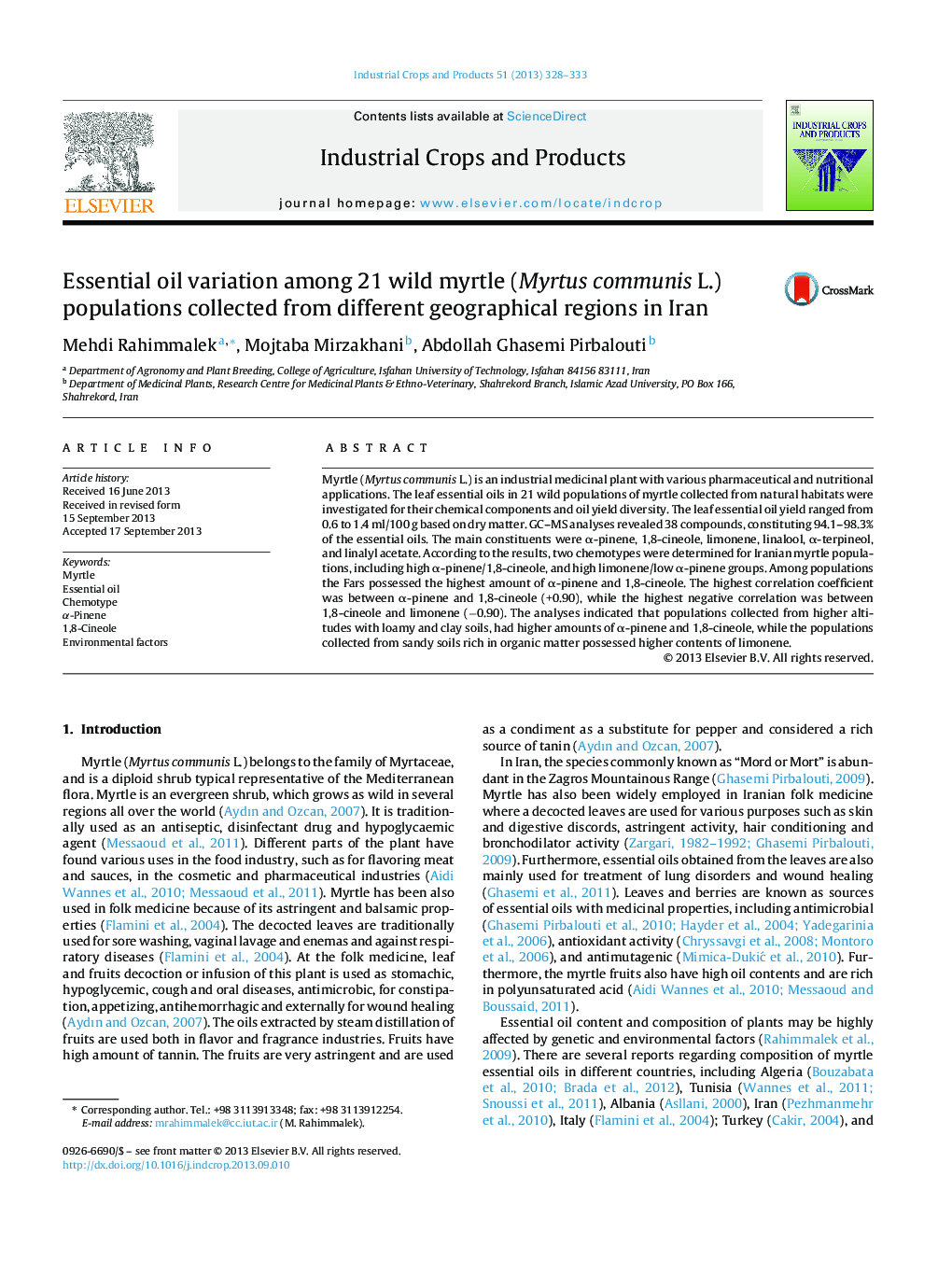| Article ID | Journal | Published Year | Pages | File Type |
|---|---|---|---|---|
| 6377155 | Industrial Crops and Products | 2013 | 6 Pages |
â¢Essential oil yield and composition of 21 wild populations of myrtle collected from natural habitats were investigated.â¢Two chemotypes determined for Iranian myrtle populations, including high α-pinene/1,8-cineole, and high limonene/low α-pinene groups.â¢The analyses indicated that populations collected from higher altitudes with loamy and clay soils, had higher amounts of α-pinene and 1,8-cineole, while the populations collected from sandy soils are rich in organic matter that possessed higher contents of limonene.
Myrtle (Myrtus communis L.) is an industrial medicinal plant with various pharmaceutical and nutritional applications. The leaf essential oils in 21 wild populations of myrtle collected from natural habitats were investigated for their chemical components and oil yield diversity. The leaf essential oil yield ranged from 0.6 to 1.4 ml/100 g based on dry matter. GC-MS analyses revealed 38 compounds, constituting 94.1-98.3% of the essential oils. The main constituents were α-pinene, 1,8-cineole, limonene, linalool, α-terpineol, and linalyl acetate. According to the results, two chemotypes were determined for Iranian myrtle populations, including high α-pinene/1,8-cineole, and high limonene/low α-pinene groups. Among populations the Fars possessed the highest amount of α-pinene and 1,8-cineole. The highest correlation coefficient was between α-pinene and 1,8-cineole (+0.90), while the highest negative correlation was between 1,8-cineole and limonene (â0.90). The analyses indicated that populations collected from higher altitudes with loamy and clay soils, had higher amounts of α-pinene and 1,8-cineole, while the populations collected from sandy soils rich in organic matter possessed higher contents of limonene.
